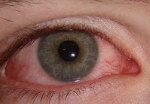Sjogren’s Syndrome Comprehensive Introduction
 Sjogren’s syndrome is a chronic autoimmune disorder that primarily affects the exocrine glands, particularly those that produce tears and saliva. It is named after Dr. Henrik Sjögren, who first described the syndrome in 1933. Understanding Sjogren’s Syndrome is important for anyone diagnoses with the syndrome or experiencing the symptoms.
Sjogren’s syndrome is a chronic autoimmune disorder that primarily affects the exocrine glands, particularly those that produce tears and saliva. It is named after Dr. Henrik Sjögren, who first described the syndrome in 1933. Understanding Sjogren’s Syndrome is important for anyone diagnoses with the syndrome or experiencing the symptoms.
Characteristics of Sjogren’s Syndrome
This condition is characterized by the body’s immune system mistakenly attacking its own moisture-producing glands, leading to dryness of the eyes and mouth.
Symptoms:
 Dry eyes: Patients may experience a persistent gritty or burning sensation in the eyes, redness, sensitivity to light, and blurred vision.
Dry eyes: Patients may experience a persistent gritty or burning sensation in the eyes, redness, sensitivity to light, and blurred vision.
Dry mouth: Individuals may have difficulty swallowing, speaking, or tasting food. They may also develop frequent dental cavities and oral infections.
Fatigue: Many people with Sjogren’s syndrome experience persistent fatigue that is not relieved by rest.
Joint and muscle pain: Joint pain, swelling, and stiffness, similar to symptoms of arthritis, can occur.
Dry skin and rashes: Some individuals may have dry skin, skin rashes, or the sensation of crawling or itching on the skin.
Vaginal dryness: Women may experience vaginal dryness, discomfort during sexual intercourse, and an increased susceptibility to vaginal infections.
Salivary gland swelling: In some cases, the salivary glands located around the jaw and in the mouth may become swollen and tender.
Causes and Diagnosis of Sjogren’s Syndrome:
Causes
Doctors do not know the exact cause of Sjogren’s syndrome is unknown. They believe it to be a condition influenced by genetic, hormonal, and environmental factors. Sjogren’s Syndrome falls into the autoimmune disorder group. The body’s immune system mistakenly targets and attacks its own moisture-producing glands, leading to their dysfunction.
Diagnosis:
Diagnosing Sjogren’s syndrome can be challenging due to its varied and overlapping symptoms. A healthcare professional will typically conduct a thorough medical history review, physical examination, and order specific tests, including:
Blood tests: These may include tests for antibodies commonly associated with Sjogren’s syndrome, such as anti- SSA (Ro) and anti-SSB (La) antibodies.
SSA (Ro) and anti-SSB (La) antibodies.
Eye examination: An eye specialist (ophthalmologist) may conduct tests to evaluate tear production and assess the health of the eyes.
Salivary gland biopsy: A small sample of salivary gland tissue may be removed and examined to check for characteristic abnormalities.
Treatment and Relief Of Sjogren’s Syndrome:
Treatment of Sjogren’s Syndrome
The treatment for Sjogren’s syndrome aims to relieve symptoms, prevent complications, and manage any underlying autoimmune inflammation. It typically involves a multidisciplinary approach, and the specific treatment plan may vary depending on the severity of symptoms.
Common strategies for Symptom Relief:
Symptomatic relief: Artificial tears, lubricating eye gels, and saliva substitutes can be used to alleviate dryness of the eyes and mouth.
Medications: Nonsteroidal anti-inflammatory drugs (NSAIDs) may be prescribed for joint and muscle pain. Immunosuppressive drugs or corticosteroids might be used in more severe cases to suppress the immune system’s overactivity.
Moisture preservation: Measures such as humidifiers, avoiding dry environments, and staying hydrated can help maintain moisture levels.
Dental care: Frequent dental check-ups and good oral hygiene practices are crucial to prevent dental decay and infections.
Eye protection: Wearing sunglasses and using protective eyewear in dry or windy conditions can protect the eyes from further damage.
Patient education and support: Counseling and support groups can provide valuable information, emotional support, and coping strategies for individuals living with Sjogren’s syndrome.
It’s important for individuals with Sjogren’s syndrome to regularly follow up with their healthcare provider to monitor symptoms, manage complications, and adjust treatment as needed. It is also important to understand this syndrome whether diagnoses or with symptoms. The best way to do that is to read everything available.











